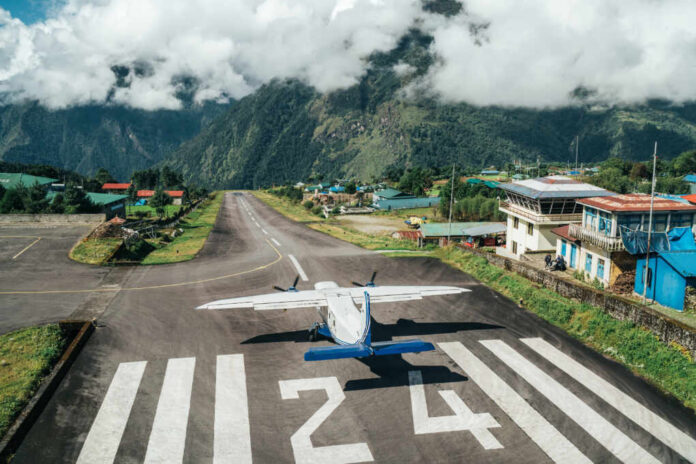
Nepal’s Tenzing-Hillary Airport continues operating as the world’s most dangerous aviation facility, forcing both seasoned pilots and terrified passengers to navigate death-defying conditions.
Story Highlights
- Lukla Airport’s 527-meter runway sits 9,334 feet above sea level with a deadly 12% slope
- Fatal crashes in 2008 and 2010 killed 32 people, highlighting extreme operational dangers
- No go-around procedures exist—pilots must land successfully on first attempt or face catastrophe
- Only daylight visual landings permitted due to unpredictable Himalayan weather patterns
Extreme Runway Specifications Create Deadly Conditions
Tenzing-Hillary Airport operates with a runway measuring just 527 meters long and sloped at a treacherous 12-degree angle. Located 2,845 meters above sea level in the Himalayas, the facility presents pilots with an impossible combination of factors. The short runway length provides minimal margin for error, while the steep slope forces aircraft to land uphill and takeoff downhill regardless of wind conditions.
Fatal Accident History Exposes Aviation Safety Failures
The airport’s deadliest incident occurred in 2008 when a Twin Otter aircraft crashed during landing, killing all 18 people aboard. Two years later, another fatal crash claimed 14 lives due to adverse weather conditions. These tragedies highlight the inherent dangers of operating commercial aviation in such extreme conditions, yet flights continue daily to serve Everest tourism demands.
Watch: Most Dangerous Airport Landing At Lukla Airport
No-Go-Around Policy Creates Life-or-Death Scenarios
Unlike standard airports, Lukla prohibits go-around procedures due to surrounding mountain terrain. Pilots must commit to landing on their first approach, creating scenarios where missed approaches result in certain death. The Civil Aviation Authority of Nepal requires specialized certification for pilots operating at Lukla, acknowledging the facility’s extreme danger levels that exceed normal aviation safety standards.
Weather Unpredictability Compounds Aviation Risks
Himalayan weather patterns change rapidly, creating sudden fog, wind shear, and precipitation that can trap aircraft or force dangerous takeoff attempts. Airlines frequently suspend operations during adverse conditions, stranding passengers for days. The combination of altitude, terrain, and weather makes Lukla a perfect storm of aviation hazards that reasonable safety protocols would prohibit at any civilized airport facility.
Built in 1964 by Sir Edmund Hillary to support Everest tourism, this airport continues operating despite clear evidence of its deadly nature. The facility serves as a stark reminder that some infrastructure decisions prioritize tourism revenue over basic safety principles that protect human life.
Sources:
Mental Floss – Scariest Airport Landings
Executive Lounges – 25 Scariest Airports in the World
Love Exploring – The Scariest Airport Landings in the World Ranked
The Luxury Travel Expert – Most Dangerous Airports in the World

























